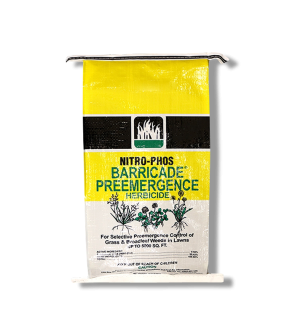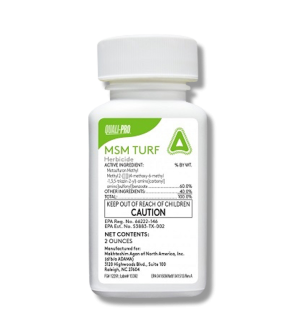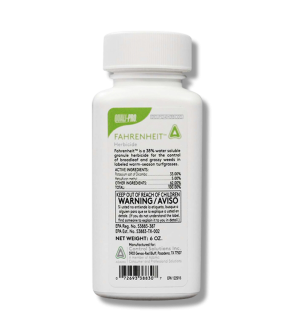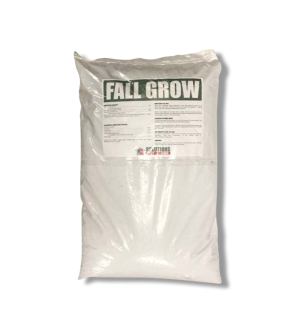How to Prepare Your Yard for Fall and Winter
Most Effective Products
How to Prepare Your Yard For Fall and Winter
This article is a general DIY guide to preparing your yards foliage for the upcoming fall and winter season. Here you can find detailed fall and winter lawn care tips for a range of different complications you might encounter during these cooler months. By following the recommended steps and products, your lawn becomes more lush, and stronger the following spring season.
The long, warm days of summer are long behind, and are now replaced with cool autumn days and brisk evenings. While you may consider this a relaxing break from regular lawn care this is far from the truth. As a homeowner, you find that your green landscape is covered with layers of fallen leaves. At first glance this seems like a fun fall activity, but this leaf layer blocks sunlight from your dormant plants and traps moisture, which can effect the health of your yard.
Even if these conditions are not present there could be several other factors effecting the health of your foliage. One of the most common denominator amongst these factors is plants expending too much energy to survive the fall and winter weather. Fortunately, regular routine maintenance and care for your lawn can help prepare it for the fall and winter weather conditions.
Despite your lawns appearance, proper lawn care for fall should begin in September and October for winter. Both fall and winter yard care continues until mid-November. By following these simple steps and recommended products, you can increase your yards survival throughout the fall and winter and make sure it is prepared to emerge more greener, and lush the next spring.
Know Your Lawns Grass Type

The first step in preparing your yard for fall and winter is understanding the type of turf you have. There are two categories of grass that your lawn will fall under known as cool-seasoned turf or warm-seasoned turf.
Cool-seasoned turf such as Fescue, Kentucky Bluegrass, Annual and Perennial Ryegrass, and Creeping Bentgrass grows best in the cooler, northern half of the United States.
Warm-seasoned turf like Bermudagrass, Centipede grass, St. Augustine grass, Bahiagrass, Carpetgrass, and Zoysiagrass will grow better in the southern portion of the United States.
As their names suggests, both of these grass types thrive in different weather and season conditions. Warm-season turf becomes dormant and grows poorly in the fall and winter season. In contrast, cool-seasoned turf is awakening out of dormancy during these seasons and more actively growing. Knowing which type of grass inhibits your yard will guide the following preparation methods for the upcoming fall and winter.
Continue Mowing as Needed

Your turf's grass growth is going to slow down when temperatures drop, but it's important to maintain proper lawn height. This will differ depending on your lawns turf grass species.
When your grass begins to grow too tall as temperatures drop, usually around 3 inches for most grasses, you will need to adjust your mower blade to a half inch below your usual mowing height. However, make sure to not cut off more than 1/3 of the grass blades current length.
If the grass is longer than 3 inches, it will fold over on itself from fallen snow or leaves causing reduced air circulation and disease growth. Another risk this generates is the unnecessary expenditure of nutrients and energy for the turf to recuperate from these conditions.
Mow regularly until your grass reaches dormancy. Warm-seasoned lawns should not be mowed if turf is no longer growing at the height of 3 inches, usually this be in October. A normal growing rate of 3 inches or more throughout the fall and winter season implies some type of cool-seasoned turf in your yard.
Cool-seasoned grasses that continue to grow later into the year may still need to be mowed at least once a week.
Clean Your Yard of Plant Debris

The layer of dead grass left behind after mowing is called thatch. This, along with piles of leaves, branches, and other plant debris starts to gather on your yard will need to be picked or raked up. This not only creates poor insulation but suitable coverage conditions for fungi, broadleaf and grassy weeds, and insects like cockroaches.
You may use a leaf blower, but must remember that no plant material must remain on lawns, plant beds, and gardens.
Aerate Your Lawn

The least obvious step in proper fall and winter lawn preparation is aeration. Without aerating your lawn's moisture, air, and nutrients becomes trapped underneath the turfs soil not spreading to other parts of yard. You may be asking right now what exactly is aeration and how does it create these movements?
Aeration is the process of puncturing holes through the top surface of turf either through machinery or lawn aerator shoes. This action helps to loosen the soil making it easier for essential nutrients and product materials to spread to plant roots in dire need of these.
The process of aeration is best used in the turfs season of active growth so for warm-seasoned grasses this would be until October whereas cool-seasoned grasses is end of January to mid-February.
Broadcast Pre-Emergent Herbicide

If there were weeds the previous spring season it is reasonable to assume that seeds or activity may occur again the following season. Weeds in the spring are usually results of germination periods throughout the fall and winter season. While some weed species germinate during this time there are types of winter weeds like chickweed emerging in lawns during fall and winter.
Consider laying out a pre-emergent herbicide to prevent and control weeds from appearing in your lawn. A pre-emergent is a herbicide used to prevent weeds from germinating when temperatures are ideal for growth.
For most lawns, we recommend applying Barricade Granular Pre-Emergent Herbicide in September to control weeds not only in the fall and winter, but also to prevent the amount of weeds occurring in spring. Barricade Granular Pre-Emergent Herbicide is a flexible, broad-spectrum herbicide that can be used in many different turf types to prevent various broadleaf and grassy weeds from sprouting.
To stop winter weeds, apply Barricade Granular Pre-Emergent Herbicide during the fall once the soil temperatures cool to 60 degrees Fahrenheit. With a 0-0-7 10 lb. bag containing 0.58% prodiamine, your application rate will depend on your turf grass species.
In turf with grasses like creeping bentgrass or red fescue, you will apply 1.5 lbs. of product per 1,000 sq. ft. In turf with grasses like St. Augustine or Bahiagrass, you will apply 4 lbs. of product per 1,000 sq. ft.
After application, be sure to water the product in with at least 0.5 inches of water within 14 days to activate it and push it farther into soil for germination weeds. This application will prevent weeds from sprouting until spring.
Do not apply to overseeded turf until 60 days have passed after seeding or until second mowing of seeded turf.
Control Emerged Weeds

Some homeowners assume fall and winter weather conditions will eliminate emerged weeds in lawns. Contrary to belief, some weed species are every so resilient or may favor conditions caused by the cooler weather. Weeds that are not treated are most prone to germination or growing until site is dead.
For this reason, we suggest using a post-emergent herbicide to get rid of weeds that have already sprouted. Weeds steal nutrients, water, and sunlight from your turf and other desirable plants you may want so it is essential to get rid of any established weeds on your lawn.
To get rid of weeds on established warm-seasoned turf, we recommend you use Fahrenheit Herbicide. If you have cool-seasoned turf, then use MSM Turf. Both products are selective herbicides that will need to be mixed in with water and can be used to control a variety of winter annual weeds.
To treat weeds with Fahrenheit, apply 0.09 to 0.28 oz. of product in 1 gallon of water per 1,000 sq. ft. depending on your targeted weed. If you are using MSM Turf, mix 0.0057 to 0.023 oz of product in 1 gallon of water per 1,000 sq. ft. of treatment area.
Load the appropriate amount of water into your spreader, add the measured amount product material, then pour in the remaining half of water. Close the sprayer tank lid and shake until solution is well-mixed. Adjust the nozzle to a fan-spray setting to coat the top and bottom of the weed leaves until wet, but not to the point of run-off. You will see affected weeds start to die within 2 weeks.
Fertilize for Stronger Turfs

To prepare your lawn for fall and winter, it is important to continue supplying it with nitrogen, phosphorous, and potassium nutrients. With the right fall fertilizer, your lawn will have what it needs to fight against weeds and have the energy to recover from cold. Slow-release fall fertilizers are best suited as this provides a continual supply of energy and nutrients throughout the seasons.
The best time to fertilize is during the fall before your grass becomes dormant. This way, your grass stores and slowly uses the nutrients over winter while its not growing so its in a better condition to grow when spring arrives.
For a general application, we recommend you use a fertilizer like Solutions 8-12-16 Fall Grow Fertilizer. Solutions 8-12-16 Fall Grow Fertilizer effectively distributes 8% of nitrogen, 12% of phosphorous, and 16% of potassium between 60 to 90 days. Throughout these days the slow-release fertilizer penetrates into the turfs roots helping to strengthen it against various diseases and stresses such as cold and foot traffic.
You can broadcast this fertilizer over your lawn at the rate of 5 lbs. per 1,000 sq. ft. of treatment area. For warm-seasoned turf, apply one time before your grass becomes dormant. For cool-seasoned turf, you may want to apply fertilizer every 6 to 8 weeks during its growing season until it becomes dormant.
Determine how much Solutions 8-12-16 Fall Grow Fertilizer to use by calculating the square footage. Once you have determine how much product to use you will load it into your broadcast spreader. Prior to application mow your turf at least 1 to 2 days in advance to help the product spread deeper into root zone of plants.
Begin applications from the edge of your treatment area. Travel from this point in a straight line at a moderate pace until entire perimeter is treated. Once the outside edge has been completed travel back and forth in a straight line to cover the space in the middle. After Solutions 8-12-16 Fall Grow Fertilizer is applied water it in with inch of water at least 1 to 2 days after.
Key Takeaways
When Should You Prepare Lawns for Fall and Winter
- To prepare your lawn for fall begin in September and in October for winter. Applications in beginning half of October can be performed for both fall and winter lawn preparation.
What Height to Leave Lawns During Fall and Winter
- We recommend leaving your lawn at a height of 3 inches during fall and winter. Heights taller than this will need to be mowed to prevent compaction and moisture.
Fall and Winter Fertilizations Should End When?
- Cool-seasoned and warm-seasoned lawns should be fertilized until mid-November to prevent unnecessary plant growth and short dormancy periods.














































































































































































































































































































































































































































































































































